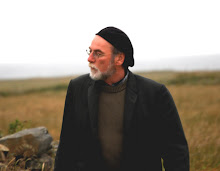Cool.
It wasn't until 1924 that Satyendra Nath Bose and Albert Einstein figured out that at extremely low temperatures, the wave functions of atoms would overlap and start acting like one big atom. The result would be something new and weird - not a solid, not a liquid and not a gas, either. But "absolute zero" is a bit like the speed of light - nothing can ever go quite that fast. Nothing can ever really get that cold, but you can get close.
It turns out that fifty-billionths of a degree above absolute zero - roughly minus 273 Celsius - will produce something called the Bose-Einstein condensate, a thick glob of atoms condensed into one. It looks like "a translucent cherry made of a glowing cloud of very cold rubidium."
 A 2001 Nobel Prize for conjuring this strange thing, which "could never have existed naturally anywhere in the universe," went to Eric Cornell and Carl Wieman. The two physicists were standing on the shoulders of Einstein and Bose, and James Dewar, who almost blew himself up in his laboratory in 1886, and Heike Onnes, who liquefied helium in 1908, and Michael Faraday, who liquefied chlorine in 1823.
A 2001 Nobel Prize for conjuring this strange thing, which "could never have existed naturally anywhere in the universe," went to Eric Cornell and Carl Wieman. The two physicists were standing on the shoulders of Einstein and Bose, and James Dewar, who almost blew himself up in his laboratory in 1886, and Heike Onnes, who liquefied helium in 1908, and Michael Faraday, who liquefied chlorine in 1823.
Among the results of all these efforts is cryosurgery, the process for recycling old car tires, liquefied natural gas, the rocket fuel that put people on the moon, and air conditioning, which allows modern civilization to flourish in the heat of the summer, from Toronto to Los Angeles and from Miami to Singapore.
And also Bill Streever's Cold: Adventures in the World's Frozen Places, which I review in today's Globe and Mail.
It turns out that fifty-billionths of a degree above absolute zero - roughly minus 273 Celsius - will produce something called the Bose-Einstein condensate, a thick glob of atoms condensed into one. It looks like "a translucent cherry made of a glowing cloud of very cold rubidium."
 A 2001 Nobel Prize for conjuring this strange thing, which "could never have existed naturally anywhere in the universe," went to Eric Cornell and Carl Wieman. The two physicists were standing on the shoulders of Einstein and Bose, and James Dewar, who almost blew himself up in his laboratory in 1886, and Heike Onnes, who liquefied helium in 1908, and Michael Faraday, who liquefied chlorine in 1823.
A 2001 Nobel Prize for conjuring this strange thing, which "could never have existed naturally anywhere in the universe," went to Eric Cornell and Carl Wieman. The two physicists were standing on the shoulders of Einstein and Bose, and James Dewar, who almost blew himself up in his laboratory in 1886, and Heike Onnes, who liquefied helium in 1908, and Michael Faraday, who liquefied chlorine in 1823.Among the results of all these efforts is cryosurgery, the process for recycling old car tires, liquefied natural gas, the rocket fuel that put people on the moon, and air conditioning, which allows modern civilization to flourish in the heat of the summer, from Toronto to Los Angeles and from Miami to Singapore.
And also Bill Streever's Cold: Adventures in the World's Frozen Places, which I review in today's Globe and Mail.
We could use some of that cold right about now, please.





1 Comments:
I'm impressed that you stumble on such a work before I did.
Ordered.
Post a Comment
<< Home